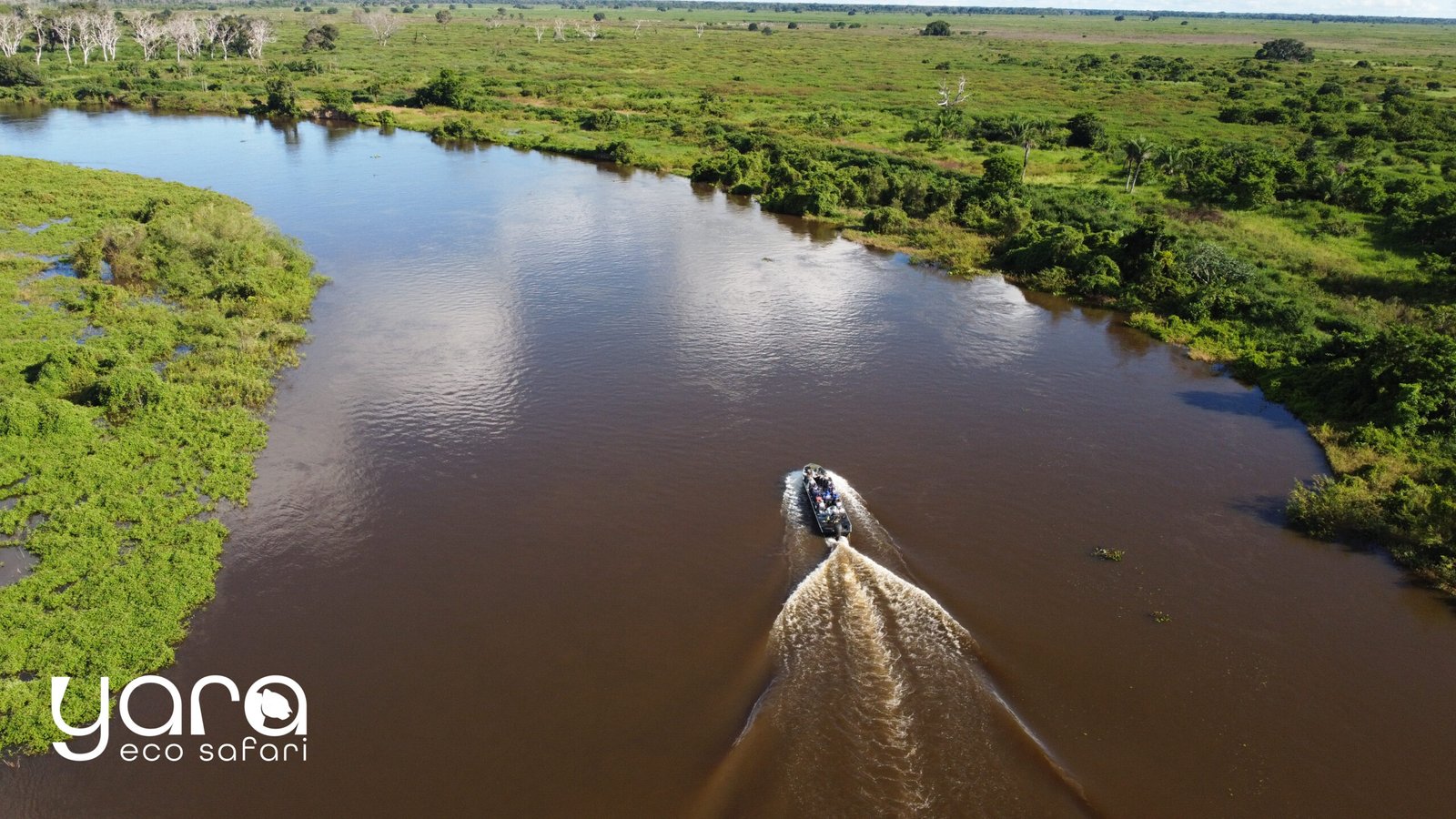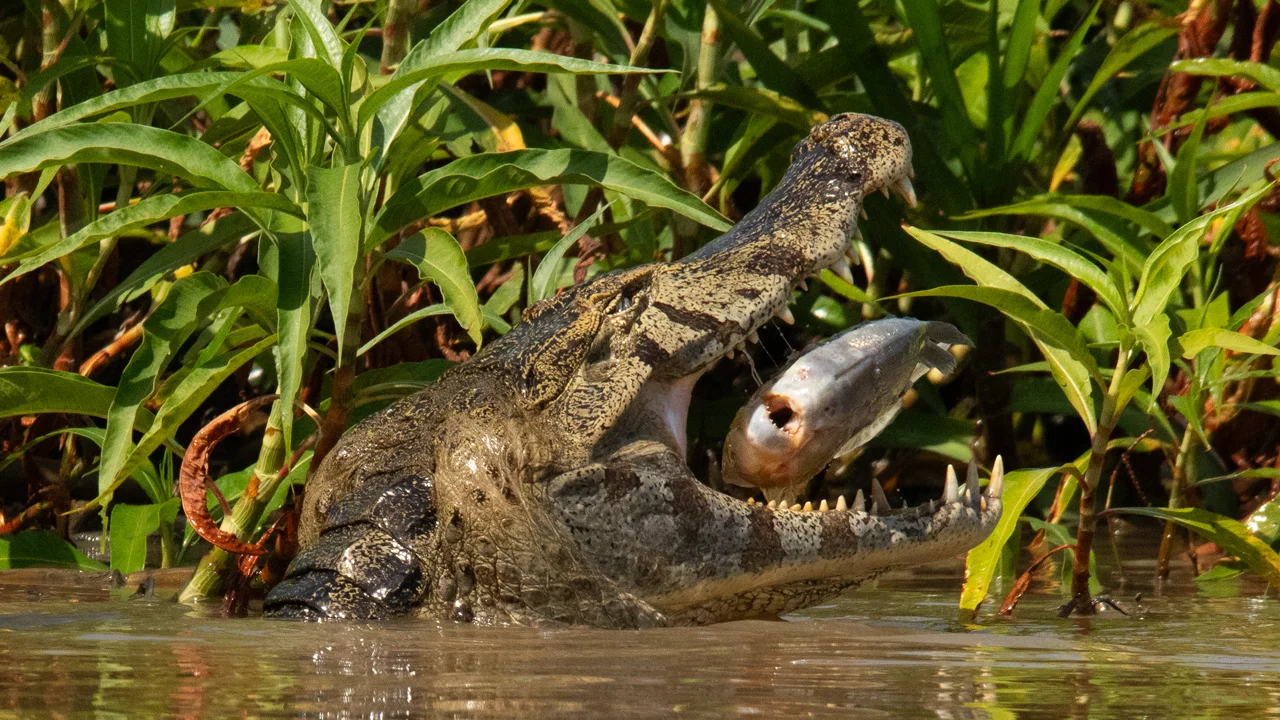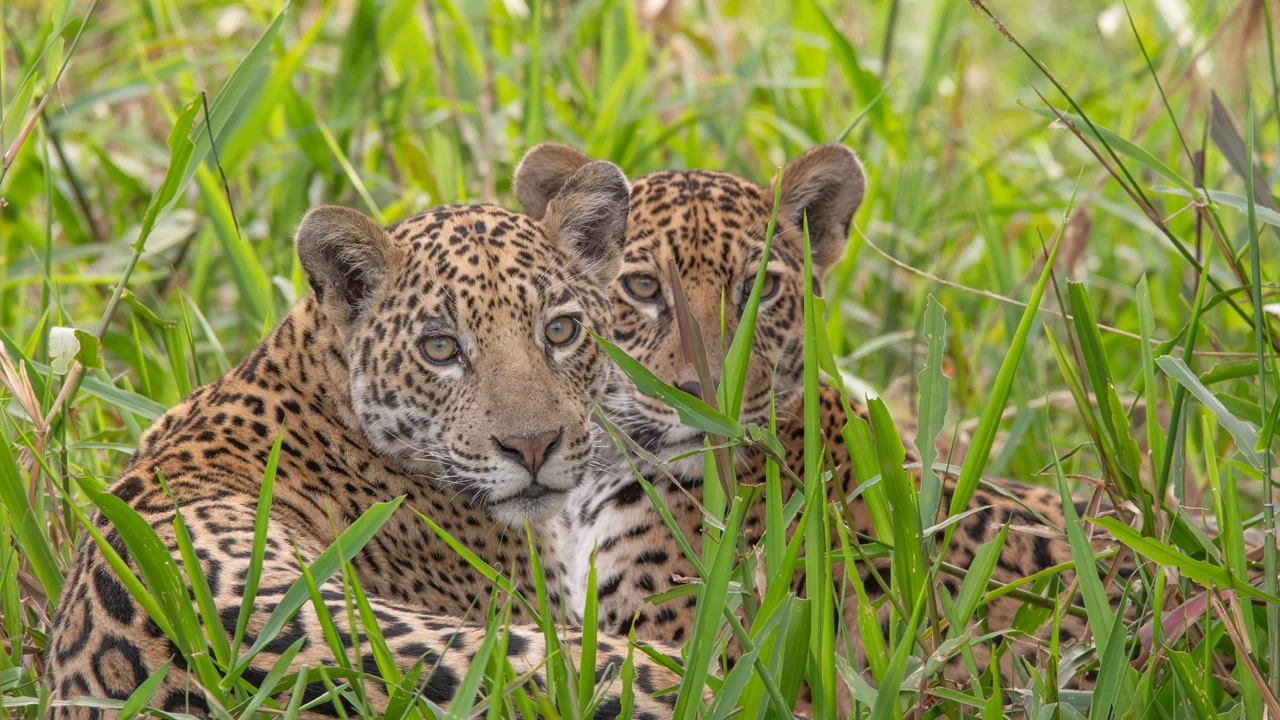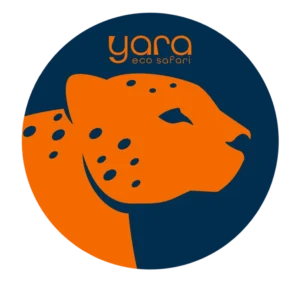When people picture Brazil’s wild side, most imagine the Amazon rainforest — a vast green ocean of trees and mystery. And while the Amazon is an ecological marvel, it’s not the best place for wildlife observation. Animals hide in thick canopy, sound travels but shapes remain unseen, and photography often means waiting in shadows.
If your goal is to see wildlife clearly, photograph it naturally, and learn deeply about ecosystems, there’s a better choice: the Northern Pantanal.
Visibility Is Everything
The Amazon thrives on secrecy. Animals survive by disappearing into the foliage. In contrast, the Pantanal — the world’s largest tropical wetland — is open, sunlit, and alive in plain sight.
- Wide rivers and marshes provide perfect viewing corridors.
- Grassy plains and gallery forests allow unobstructed views of animals.
- Safaris happen by boat, letting you drift quietly and eye-level with wildlife.
This makes the Pantanal the ultimate wildlife stage, where jaguars patrol riverbanks, capybaras rest in groups, and hyacinth macaws fly low overhead, all within the reach of your camera lens.
👉 For context, see the Ramsar Convention on Wetlands and UNESCO World Heritage description of the Pantanal — both recognize the region as globally significant.
Jaguar Central
Let’s be clear: if you came to Brazil hoping to see a jaguar, don’t go to the Amazon. Go to the Northern Pantanal.
Why?
- It has the highest jaguar density in the world.
- Open terrain makes spotting easier.
- Boat-based safaris provide silent, respectful proximity.
- Non-invasive monitoring, such as the Jaguar Identification Project, allows guides to recognize individual cats by their unique rosettes.
Here, you don’t just see a jaguar. You meet Marcela, Ousado, or Esperança — individuals with histories, families, and territories.
👉 Learn more in our feature: Jaguar Diaries: Meet the Most Famous Cats of the Pantanal.
A Birdwatcher’s Paradise
The Pantanal is not only jaguar country — it’s also one of the best places on Earth for birdwatching.
- Over 650 species of birds call this biome home (BirdLife International).
- Icons include the jabiru stork (symbol of the Pantanal), toucans, and the hyacinth macaw, the largest parrot in the world.
- Open skies and sparse canopy mean birds are easily seen and photographed, unlike in the Amazon.
If you’re a birder or a photographer, the Pantanal offers endless opportunities — sometimes hundreds of species in a single trip.
👉 Related post: Birdwatching in the Pantanal and Atlantic Forest.
More Than Cats and Birds
The Pantanal is a full wildlife experience:
- Giant otters hunt and play in family groups.
- Capybaras, the world’s largest rodents, sunbathe along the banks.
- Caimans bask like prehistoric statues.
- Tapirs, marsh deer, and anacondas add to the sense of discovery.
Many of these animals are harder to see in the Amazon — but in the Pantanal, they share the river with you.
Eco-Tourism That Protects
The Northern Pantanal isn’t just rich in wildlife; it’s also a hub for eco-tourism and conservation.
- Local lodges and safari operators work with conservation NGOs like WWF-Brazil and the Blue Macaw Institute, which has been critical in protecting the endangered hyacinth macaw.
- By choosing ethical operators, visitors directly help sustain local communities and research programs.
👉 Related post: Sustainable Safaris: Can You Photograph Wildlife Without Harming It?.
So, Amazon or Pantanal?
- If you want mystery, endless forest, and a sense of untouched vastness — choose the Amazon.
- But if your dream is to see wildlife clearly, capture world-class photos, and learn directly from biologists — choose the Northern Pantanal.
This is where jaguars step out of the shadows, where macaws light up the sky, and where eco-tourism directly supports conservation.
The Pantanal is Brazil’s best-kept secret — and the ultimate safari destination you didn’t know you needed.






